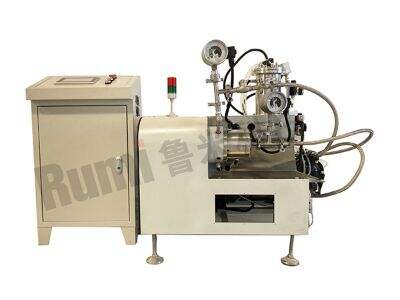Mixing adhesive can be a bit tricky, but with the right tools and techniques you can get great results every time. At Rumi, we provide the assistance you need to optimize the use of high viscosity mixer for adhesive. So here are a few things to keep in mind that are very essential in order to make your mixer run effectively and ease your mixing process.
Mixer speed and time to mix adhesive
This is because both of these factors can be extremely important whether you are using high viscosity adhesives, and how long you mix in the blender. The quicker the mixer, the faster the adhesive ingredients will mix among them, and the longer the mixing time, the thoroughly they will mix. Using the speed and time settings on your mixer, you can mix your adhesive to be the ideal thickness and consistency, regardless of when you go in to use it. It’s just like getting the recipe right—when you dial in the speed and time, you’ll get your adhesive just the way you like it!
Which Impeller Design Does Mixing Adhesives Require?
The impeller is quite an essential component of the mixer, as it is the part that does the mixing work in the adhesive ingredients. Different types of adhesives will perform well with different types of impeller designs so selecting the right design is essential. In the case of high viscosity adhesives that need all ingredients to be effectively mixed together, a powerful and sturdy impeller design may be required. Choosing the right impeller for your adhesive will guarantee that your mixer works at its best every time you use the appliance. This means you won’t have to deal with uneven mixing or clumps in your adhesive, so your projects will run that much more smoothly.
Temperature Control When Mixing Adhesive
When mixing high viscosity adhesives, temperature is the key player. Well, maintaining proper temperature allows the adhesive ingredients to flow more easily and make much better blends. When it is too low, the adhesive is too thick and hard to mix. However, if too high, the glue layer will be too thin, resulting in ineffectiveness. Please refer to the data till October 2023. Maintaining the temperature constant and at the proper level will result in better adhesive quality and consistency, ensure that you obtain the best result every time.
Batch Sizes and, or, Shear Rates for Excellent Adhesive, Performance
Batch sizes and shear rates are significant parameters to evaluate during high viscosity adhesive mixing applications as well. Make sure you pay attention to the batch size — how much adhesive you are introducing in one run — because if you change this size, you will also change the results you will have in final mixing. Mixing might be easier with a smaller batch size, but for larger projects, a larger batch saves time. Another way to achieve consistent adhesive performance is to control shear rate—the rate at which the adhesive is mixed. By making widly different choices in batch size and shear rate, you can ensure that your adhesive will pass quality control at each time you mix. So you can trust that your adhesive will perform the way you want it to, making it crucial for any project you are undertaking.
Its High Viscosity Mixer Cleaning and Maintenance
The cleaning and maintenance of your high viscosity mixer are critical to keep it in excellent shape and use it for the longest possible time. Regularly clean the mixer and its components — sometimes, glue and other adhesives can build up inside the machine, but by taking time to clean it, you can keep the mixer functioning smoothly. Over time, residue can accumulate, making the mixer work less well and resulting in poorer mixing and poorer results. And staying on top of regular maintenance tasks, like greasing moving parts and checking seals, will also extend the life of your mixer. If you adhere to the cleaning and maintenance guidelines as mentioned above, we can say that your high-viscosity mixer for adhesive will surely be in fine working conditions for years. This means you can mix to your hearts content in the knowledge that you can continue to depend on it for all your adhesive mixing needs.
Conclusion
To sum up, various factors should be taken into consideration to help your high viscosity mixer for adhesive succeed: mixer speed, impeller type, temperature control, batch sizes and shear rates. Knowing how these different factors affect mixing and employing the right techniques allows you to consistently achieve high-quality results when using your adhesive. Do keep following the cleaning and maintenance tips to do it in great condition. From adhesive mixing projects that make your life easier to those that are more fun, there's no end to what you can get done with the right high viscosity mixer for adhesive from Rumi, and with the right approach and care, it will continue to serve you and provide you with excellent results!
 EN
EN
 AR
AR
 BG
BG
 HR
HR
 CS
CS
 DA
DA
 NL
NL
 FI
FI
 FR
FR
 DE
DE
 EL
EL
 IT
IT
 JA
JA
 KO
KO
 NO
NO
 PL
PL
 PT
PT
 RO
RO
 RU
RU
 ES
ES
 SV
SV
 TL
TL
 ID
ID
 LT
LT
 SR
SR
 SK
SK
 SL
SL
 VI
VI
 HU
HU
 TH
TH
 TR
TR
 FA
FA
 MS
MS
 BE
BE
 IS
IS
 AZ
AZ
 BN
BN
 EO
EO
 LA
LA
 MN
MN



